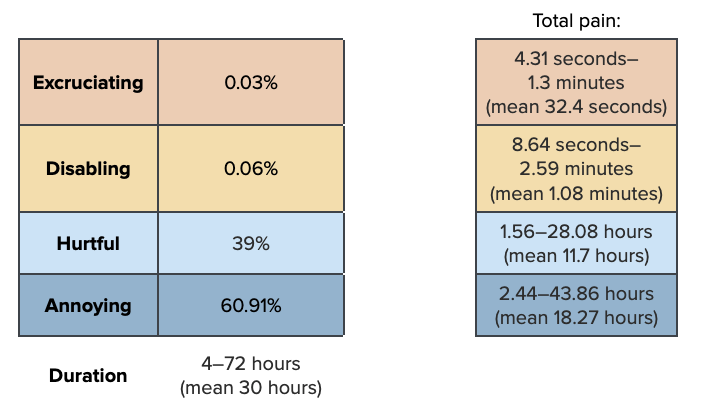Mortality rates can reach 25% for 24-hour trips (Debnath et al., 2015, Table 3). High densities during transportation also pose risks to water quality, including dissolved oxygen depletion and increased ammonia concentrations. As some individuals become weaker, incidences of cannibalism can also rise. We account for these issues here because they are separate from dissolved oxygen and ammonia in farm ponds.
We assign pain to the ‘annoying’ and ‘hurtful’ categories to account for restricted movement and behavior, and to ‘disabling’ and ‘excruciating’ to account for cannibalism and mortality.


